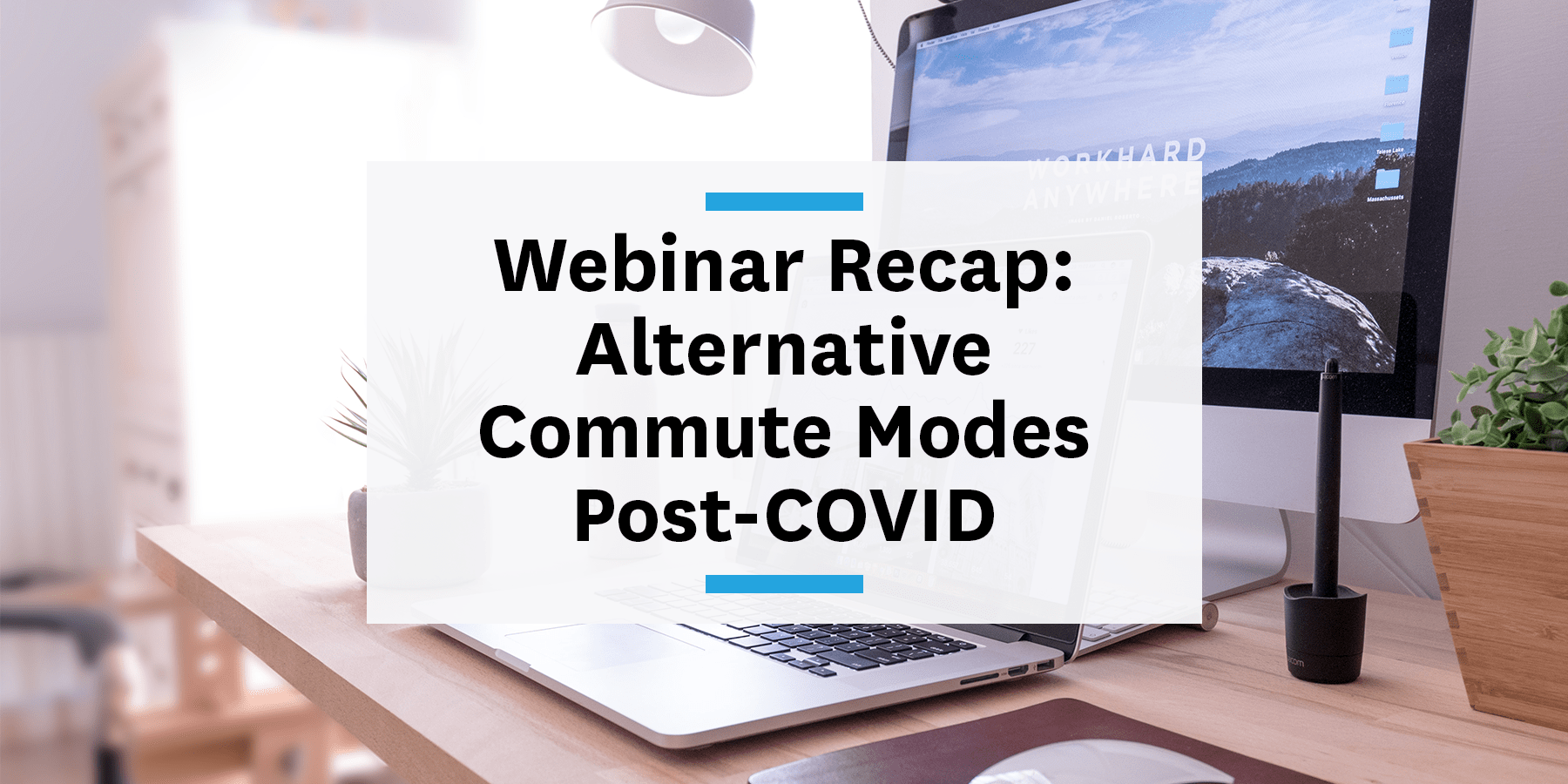Earlier this month, we hosted our second Commute+ Reimagined webinar, discussing alternative commuting modes and their roles in post-COVID commute management.

Our panels touched on three main points to make the entire commuting experience as safe as possible for individual employees: options, over communication, and marketing.
These points ensure that employers put their employees safety and convenience first – since they’re the ones that need to make the trip consistently.
Commuting Options
This is perhaps the most important point of discussion during the webinar: providing options. Right now, and for an indefinite amount of time, employees are going to be wary of crowds, especially while commuting. Metros, trains, and buses are going to be avoided if possible because of their inherent nature to draw crowds of people. That means employers need to add options to their commute management program.
Panelist Cynthia Taylor, VP of Customer Success at Scoop Technology, said it best. It’s about the options an employer can make available so an employee can choose the safety profile that works for them.”
This means adding options and services based on what will work for your specific employees, not just adding options for the sake of adding them. Your employees’ safety should be your number one concern and focus, and you need to make improvements to ensure that in their commutes.
You may need to conduct a full program audit in order to make the most informed decision, especially considering the drastic situation we’re in. Keep in mind, though, that commute management is not a one-and-done process. You’ll need to continue to improve and adapt as you learn from your employees and their experiences in returning to the office.
Communication
Now is not the time to keep your employees in the dark about your return-to-the-office plans! Everyone’s life has been turned upside-down — not only at the beginning of quarantine, but as companies begin making moves to return to the office.
Parents have made new arrangements for their childcare. Home lives have changed in order to make productive work environments. Now is the time to communicate – and then some – with your employees. Your commuting program needs to be included in this conversation.
Panelist Shawn Kelly, Managing Director of Customer Success at WeDriveU, gave us this inspiration. He said, “Over-communicating is one of the most important things you can do. When it comes to transportation options, it’s no different.”
Your employees need (and want!) to know what you’re doing for them and their safety. If you want them to come back to the office in any capacity, you need to gain their trust and confidence. If they don’t feel comfortable with the commuting options and protocols you put in place, why would they trust the physical office environment would be any different?
It’s more important to over-communicate in order to gain your employees trust, than to leave them in the dark and create uncomfortable, and potentially dangerous, commute and work environments. If your employees aren’t aware of the effort you’re making to make their commute safer, they will most likely resort to driving alone, which isn’t sustainable from infrastructural or environmental standpoints.
Marketing
The last point our panelists emphasized was marketing the commuting options you’ve added or improved. You may be thinking this is the same as the communication section above, and you’re not completely off-base.
The difference, though, is proving to your employees why the options and programs you’ve put in place are safe and beneficial to them. Marketing is the next step in the communication process of your return-to-the-office strategy. You have to prove to potential customers or clients why your goods and services are the best; the same goes for your commute management program.
Your employees want to know why using bikeshare is better than driving and how it will benefit them. You can tell them it’s better for the environment, and commuting outdoors, not cooped up in a car, increases productivity and creativity. This is your opportunity to prove to them you’ve genuinely placed their safety, mental health, and work-life situation as a priority.
Right now, all your employees are navigating personal and professional situations they’ve never dealt with before. You need to do everything in your power to place their safety first once you decide when and how to return to the office. If you want to hear our panelists’ insights first-hand, you can rewatch our webinar here!




